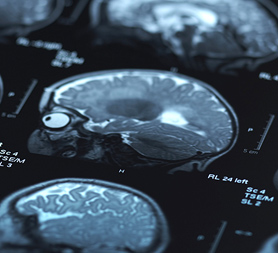Sex and coffee top list of stroke triggers
Coffee tops a list of trigger factors that could increase your chances of suffering a stroke, research shows.

Losing your temper, having sex or blowing your nose are other factors found to increase the risk of a haemorrhagic stroke.
This type of stroke is caused by a weak blood vessel, or aneurysm, bursting in the brain. Almost 20 per cent of strokes in Britain are caused by such a bleed in the brain, which strikes 28,500 people a year, according to the Stroke Association.
Coffee was the worst offender, boosting the risk of a stroke by 10.6 per cent. Next came vigorous physical exercise with 7.9 per cent followed by nose blowing at 5.4 per cent and sexual intercourse with 4.3 per cent.
Other risk factors included drinking cola, being startled, and getting angry.
“All of the triggers induce a sudden and short increase in blood pressure, which seems a possible common cause for aneurysmal rupture,” said lead researcher Dr Monique Vlak, from the University Medical Centre in Utrecht, the Netherlands.
Published in the American Heart Association journal Stroke, the study looked at 250 haemorrhagic stroke patients.
Dr Sharlin Ahmed, from the Stroke Association, told Channel 4 News: “Any increase in blood pressure could weaken the artery wall, so all the factors listed here could trigger a stroke.”
However, she pointed out that the questionnaire was carried out on the survivors, rather than those who died of a stroke.
“They only questioned the survivors. It is not a retrospective look at mortality cases so it is limited,” Dr Ahmed added.
Generally, the survival rate among haemorrhagic stroke patients is much lower than that of regular stroke victims.
With the majority of strokes, there is a general rule of three: a third survive with minimal difficulties, a third survive but suffer from disability or mobility problems, and a third do not survive, according to the Stroke Association.
The rupture of a brain aneurysm is incredibly dangerous. It is often sudden, without warning. Dr Sharlin Ahmed
The group questioned by Stroke answered questions about their exposure to 30 potential trigger factors.
But the study also concluded that the highest risk factors were centred around a person’s sex, age and blood pressure. Women, older people and those with high blood pressure are more susceptible, it said.
Aneurysms in the brain cause the walls of blood vessels to balloon, leading to a risk of rupture and the sudden release of blood. This type of stroke, known as a “subarachnoid haemorrhage”, can have fatal or disabling effects.
An estimated 2 per cent of the population have intracranial aneurysms (IAs) but few of them rupture. However, you are unlikely to detect an aneurysm without an MRI scan, Dr Ahmed said. Some people detect them early after experiencing blurred vision or vomiting.
Yet many go undetected unless they burst – which they often do without warning. Sometimes a rupture is preceded by symptoms such as vomiting, impaired vision, fainting or severe headaches.
Dr Vlak said: “Reducing caffeine consumption or treating constipated patients with unruptured IAs with laxatives may lower the risk of subarachnoid haemorrhage.
“Whether prescribing antihypertensive (blood pressure lowering) drugs to patients with unruptured IAs is beneficial in terms of preventing aneurysmal rupture still needs to be further investigated.”
Dr Ahmed told Channel 4 News there is a chance that aneurysms could be hereditary, where malformations appear in blood vessels.
“The rupture of a brain aneurysm is incredibly dangerous. It is often sudden, without warning,” she added.
“However, it’s very difficult to determine whether the triggers identified in this study are definitely related to the onset of a stroke as they could simply be put down to coincidence.
“A lot more research needs to be carried out to assess whether each of the identified triggers could directly cause an aneurysm to rupture.”
Dr Ahmed said that given the risk of sudden death, the most many people can do is carry out a preventative strategy in their healthcare.
-
Latest news
-
Taylor Swift’s new break-up album breaks records3m

-
NHS trust fined £200K for failings that led to death of two mental health patients3m

-
Sunak vows to end UK ‘sick note culture’ with benefit reform3m

-
‘Loose talk about using nuclear weapons is irresponsible and unacceptable’, says head of UN’s nuclear watchdog3m

-
‘There wasn’t an Israeli attack on Iran,’ says former adviser to Iran’s nuclear negotiations team7m

-




